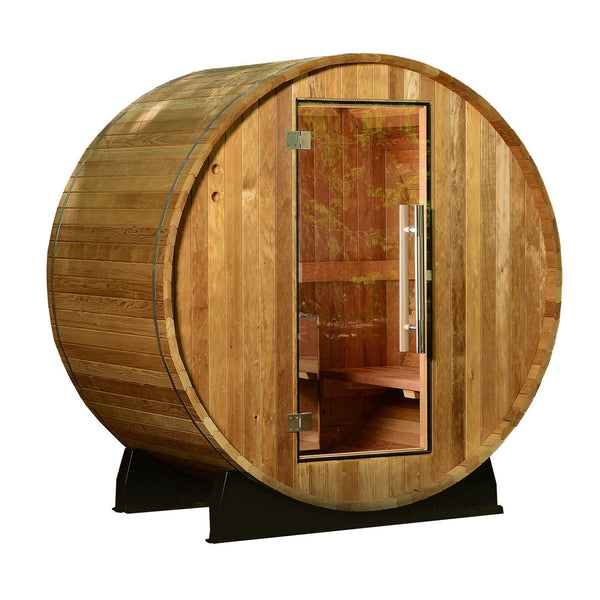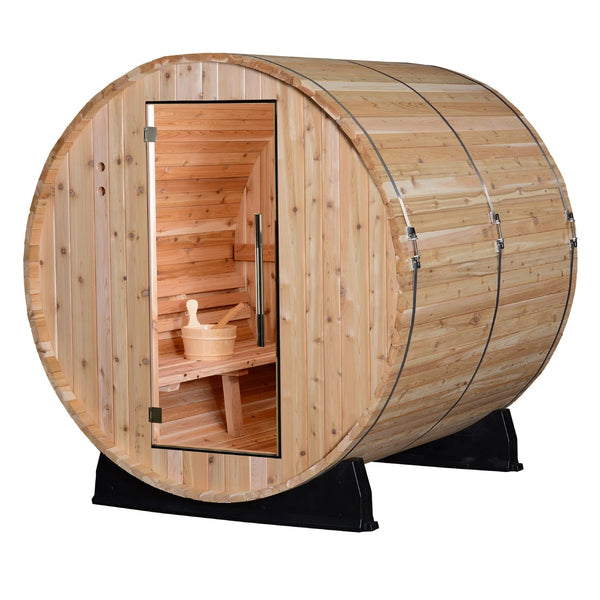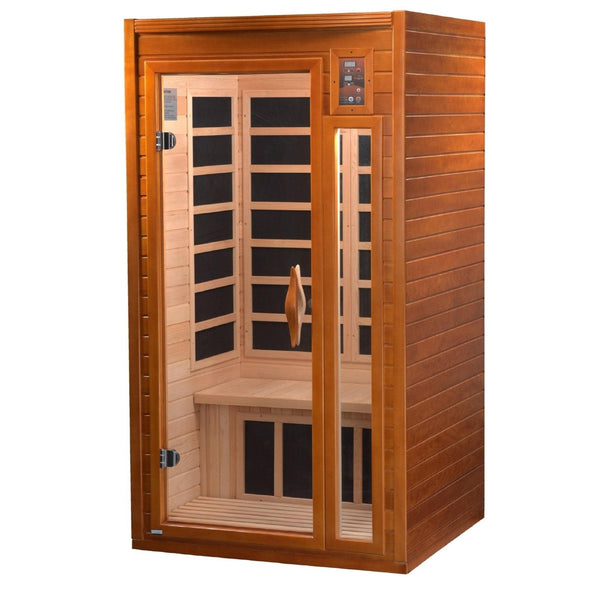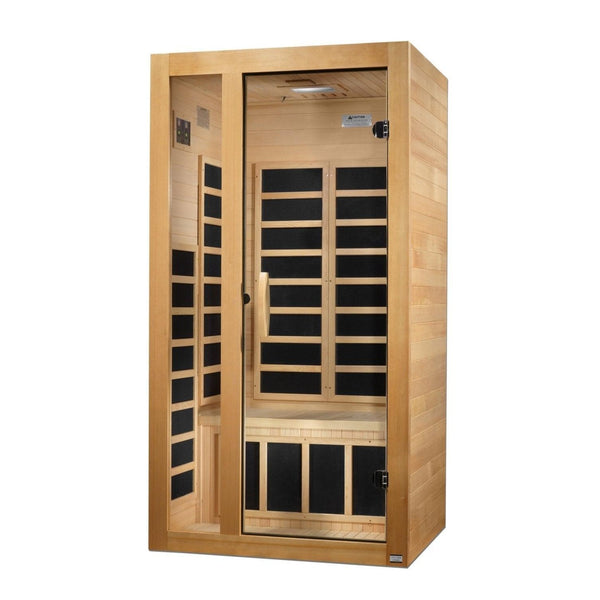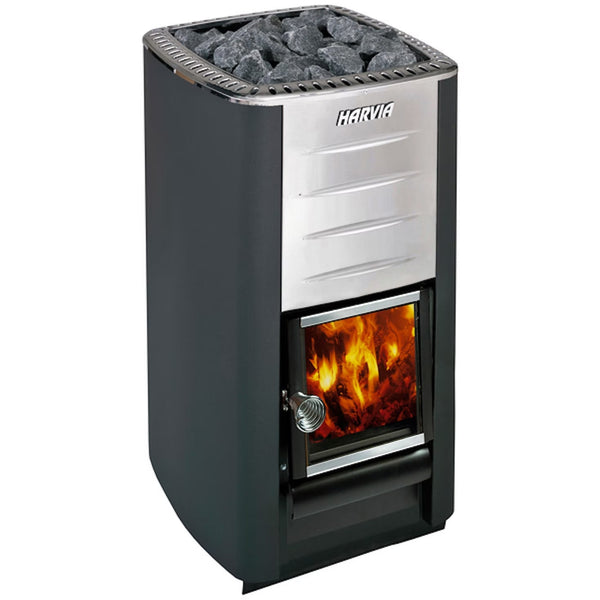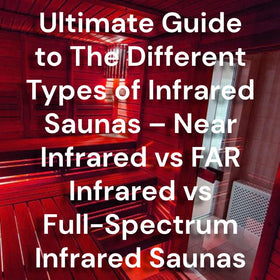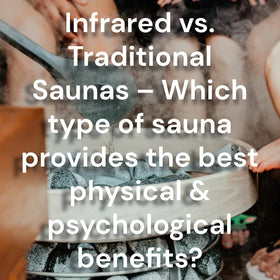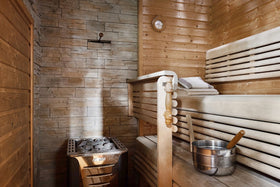Infrared saunas are perfect for home use due to their energy efficient design, easy maintenance and gentle impact on the body. Ideal for post-workout recovery and joint pain relief, our premium full-spectrum infrared saunas are perfect for every home. Buy your infrared sauna with confidence at Select Saunas and enjoy our easy financing, expert guidance, and a hassle-free shopping experience.
Infrared Saunas
Best Selling Infrared Saunas Comparison
|
Sauna Model |
Capacity |
Heater Type |
EMF Rating |
|
3-Person |
FAR Infrared |
Low EMF |
|
|
2-Person |
Full Spectrum Infrared |
Near Zero EMF |
|
|
1–2 Person |
FAR Infrared |
Ultra Low EMF |
|
|
2-Person |
Hybrid Sauna |
Shielded Low EMF |
|
|
1–2 Person |
FAR Infrared |
Ultra Low EMF |
Benefits of an Infrared Sauna
Infrared saunas use targeted light wavelengths to warm your body directly, unlike traditional saunas that heat the air. This creates a gentler, more efficient heat experience that delivers a wide range of wellness benefits. Here's a closer look at what sets infrared saunas apart—and why so many people are making the switch.
Deep, Targeted Heat Penetration
Unlike conventional saunas that rely on high ambient temperatures (often 170–200°F), infrared saunas operate at a lower range—typically between 120°F and 150°F. But the difference is in how the heat is delivered.
Infrared waves can penetrate up to 1.5 inches beneath the skin, warming muscles, joints, and tissues directly. This makes the heat feel more tolerable while promoting a deep, detoxifying sweat at a cellular level.
Enhanced Detoxification
Infrared heat promotes sweating at lower temperatures, which can stimulate detoxification through the skin. Sweating helps expel heavy metals (like mercury and lead), BPA, and other environmental toxins stored in fat cells.
One old claim by a Japanese researcher suggests that infrared-induced sweat contains more toxins per volume than sweat from traditional exercise or saunas. While this specific claim may be controversial, studies show that you can sweat out toxins such as arsenic, cadmium, lead, mercury, and other heavy metals.
Pain Relief and Muscle Recovery
Infrared therapy is widely used in sports medicine and physical therapy for its ability to relieve muscle soreness, reduce joint stiffness, and increase circulation. The heat helps dilate blood vessels, which boosts oxygen flow and accelerates tissue repair.
Infrared saunas are especially beneficial for:
-
Arthritis
-
Fibromyalgia
-
Chronic fatigue syndrome
-
Post-workout recovery
Look for far-infrared (FIR) models if deep tissue relief is a top priority.
Energy Efficient
Infrared saunas are more energy-efficient than traditional heaters, drawing 1.5–2.0 kWh per session on average. That means up to 90% lower energy bills compared to electric saunas.
|
Infrared advantage: Most small infrared saunas plug into standard 120V or 240V outlets, with no need for special venting or plumbing. This makes them ideal for home installations, even in tight spaces like bedrooms, basements, or home gyms. |
Improved Circulation and Heart Health
All saunas have wonderful benefits for cardiovascular health, and infrared saunas excel at it. Infrared sauna sessions elevate your heart rate and increase circulation in a way that mimics light cardio exercise. When you sauna before or after exercise, you reap a fantastic synergistic effect for your heart health.
Studies show that 30-minute sessions can raise heart rate to 100–150 bpm, similar to a brisk walk. This can help:
-
Lower blood pressure
-
Improve vascular function
-
Support metabolic health
Many of our customers (and sauna enthusiasts like ourselves included) notice improved cardiovascular endurance over time, especially with regular sauna use (3–4 times per week).
Weight Loss Support
Infrared saunas may aid weight management by triggering passive calorie burn. The body works harder to regulate internal temperature, which can burn up to 200–600 calories per 30-minute session, depending on intensity and individual metabolism.
Of course, an infrared sauna session is not a replacement for diet and exercise, but it’s a powerful supplemental tool.
Skin Health and Anti-Aging Effects
The infrared spectrum promotes collagen production, improves skin tone, and increases blood flow to the dermis, helping to reduce the appearance of fine lines, acne, and hyperpigmentation.
Near-infrared light (NIR), used in full-spectrum models, penetrates the top layers of skin to boost regeneration and cellular turnover, giving skin a more youthful appearance over time. That’s why many celebrities use red light and infrared heat therapy to stay youthful.
What to Consider When Buying an Infrared Sauna
To get the most value from your investment, it’s important to understand the technical specs, materials, and design features that directly impact performance, comfort, and long-term satisfaction. Here are the most important things to look for:
Sauna Size and Capacity
Infrared saunas typically range from 1-person to 5-person models. Consider your available space and how you plan to use the sauna with others at home.
-
1-Person Saunas: Compact and efficient, ideal for small spaces like bedrooms or offices. Example: Dynamic Saunas Barcelona Elite
-
2–3 Person Saunas: Most popular size for couples or small households. Offers more legroom and often includes bench seating on multiple sides, such as this Maxxus Sauna.
-
4–5 Person Saunas: Best for families or social use. These units may need a 240V dedicated circuit and more square footage, such as this hybrid Finnmark FD-5 Sauna.
Type of Infrared Heating Technology
There are three types of infrared wavelengths used in saunas, each with specific benefits:
-
Far Infrared (FIR): Penetrates deeply into muscles and joints. Ideal for detox, recovery, and pain relief.
-
Near Infrared (NIR): Targets the skin and upper tissues. Supports wound healing, skin tone, and collagen production.
-
Mid Infrared (MIR): Offers a balance of penetration depth and surface warmth. Aids circulation and flexibility.
Full-spectrum saunas combine all three wavelengths in one unit, offering the most versatile therapeutic experience. Our top models, such as the Golden Designs Hotel, use modern carbon heaters to deliver consistent, even warmth across all panels.
Heater Panel Design and Coverage
Heater placement and quality are key to how effective and comfortable your sauna will feel.
-
Carbon Panels: Provide even, low-intensity heat across a wide area. Long-lasting and energy-efficient.
-
Ceramic Heaters: Hotter and faster, but more concentrated. Often used for spot treatment.
-
Hybrid Systems: Combine carbon and ceramic for maximum benefit.
Look for 360° heater coverage—including panels on the back, sides, legs, and sometimes under the bench. This ensures your entire body is enveloped in consistent heat without hot or cold zones.
EMF and ELF Safety
Electromagnetic Field (EMF) exposure is a common concern with electrically powered devices. Reputable infrared saunas now include low EMF and ELF certifications, especially models designed for health-conscious buyers.
At Select Saunas, we only feature brands that offer third-party EMF testing, keeping readings below 3 milligauss (mG) at the point of contact—well under established safety thresholds. Examples include the popular Dynamic Saunas Cardoba Ultra Low EMF Sauna.
Build Quality and Materials
The durability and comfort of your sauna depend heavily on the materials used.
-
Wood: Look for hypoallergenic, sustainably sourced woods like Canadian Hemlock, Red Cedar, or Basswood. These are durable, low in resin, and resistant to warping from heat.
-
Glass: Tempered safety glass doors and windows retain heat efficiently while providing visibility and a modern aesthetic.
-
Construction: Tongue-and-groove joinery and double-wall insulation enhance both heat retention and structural integrity.
From our own experience and what we’ve heard from other sauna enthusiasts, well-built saunas last 10–20 years with minimal maintenance.
Control Panels and Connectivity
Many infrared saunas now include digital touch panels—some inside and out—for controlling temperature, session time, lighting, and music. The best features that help supplement your relaxation include:
-
Programmable timers
-
Bluetooth or Aux audio systems
-
Chromotherapy (LED light therapy)
-
Wi-Fi or app control (on select models)
If you’re looking for a luxury infrared sauna experience, the Golden Designs 2025 Reserve Edition GDI-8040 is one of the top models. In addition to its spacious 67″ x 37″ x 69″ interior, this model also comes with a Red Light Therapy feature.
Electrical Requirements
Small 1-2 person saunas can typically be plugged into a standard 120V outlet. On the other hand, 240V saunas may be needed for 3-person or higher capacity models, particularly those with full-spectrum capability. These often require a dedicated circuit installed by a licensed electrician.
Always check the wattage draw (usually between 1.4–2.2 kWh) and match it with your available household capacity.
Ventilation and Placement
While infrared saunas don’t require external ventilation like traditional models, room airflow still matters.
Ideal locations include:
-
Bedrooms
-
Home gyms
-
Finished basements
-
Spa or wellness rooms
Make sure there’s at least a few inches of clearance around the unit and a flat, dry surface underneath.
Flexible Sauna Financing at Select Saunas
Investing in your wellness shouldn’t mean putting your finances under pressure. That’s why Select Saunas offers simple, flexible financing to make owning your sauna more accessible—no waiting, no stress.
Thanks to Bread Pay™, you can split your total into easy monthly payments with zero hidden fees. Just choose your sauna, select Bread Pay at checkout, and enjoy a straightforward path to sauna ownership.
And here’s a bonus: your sauna might qualify as a health expense. With a Letter of Medical Necessity from your doctor, you could use HSA or FSA funds to cover the cost. We’ve partnered with Truemed to help make the process smooth and hassle-free.
Frequently Asked Questions (FAQs)
Q1: What is the difference between an infrared sauna and a traditional sauna?
Infrared saunas use infrared heaters to emit light that directly warms your body, while traditional saunas heat the air around you using an electric or wood-burning heater.
Q2: Do I need special electrical requirements for my infrared sauna?
Most home infrared saunas operate on a standard 120V outlet. Larger units and hybrid saunas will require a dedicated 240V circuit.
Q3: What type of flooring is best for installing an infrared sauna?
A flat, dry surface such as tile, concrete, or laminate flooring is ideal for infrared sauna installation.
Q4: Can I install an infrared sauna, or do I need professional help?
Most infrared saunas come with detailed instructions and can be assembled by two people. However, if you prefer, we can connect you to a professional contractor in your area.
Q5: What is the difference between near-, mid-, and far-infrared saunas?
Near infrared saunas penetrate the skin's surface, mid-infrared penetrate deeper tissues, and far-infrared reach deeper into the body, offering different health benefits. This includes an ability to burn calories using infrared waves, promoting weight loss, skin rejuvenation, and other effects.
Q6: How do I choose the infrared sauna of the proper size for my space?
Consider the dimensions of your available space and the number of users to select the appropriate infrared sauna size. Our team can help you find the best home infrared sauna for your space.
Q7: Can I use my infrared sauna if I have a pacemaker or other implanted medical device?
People with certain medical conditions should be cautious when using infrared saunas.
Consult your healthcare provider before using an infrared sauna if you have a pacemaker or other implanted medical device.



